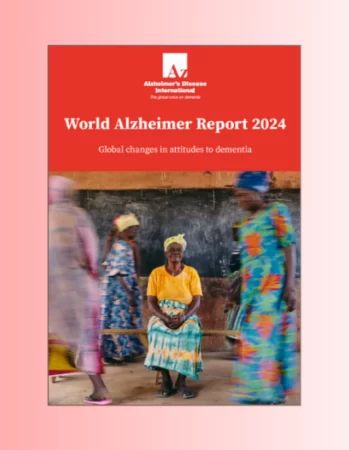This month’s caregiver article excerpts feature navigating care for children and parents, global attitudes toward dementia, a documentary inspired by a filmmaker’s late mother living with Lewy body dementia, and the potential unaffordable costs of aging in place.
How to Navigate Being a ‘Sandwiched’ Caregiver
Taking care of children while also caregiving for older loved ones will take a toll on family members. San Diego Moms offer a candid look at what caregivers are dealing with. Caring for children and “an older/dependent family member… can feel 2 to 3 times more draining.” They highlight common signs of caregiver burnout including feelings of resentment. The article gives five tips to make the multi-generational caregiving load manageable and how to keep organized.
Thanks to the Caregiver Action Network e-newsletter.

Global “Attitudes to Dementia”—ADI’s World Alzheimer’s Report
Last week, Alzheimer’s Disease International (ADI) published the 2024 World Alzheimer Report, which explores attitudes toward dementia. The report covers how dementia is perceived by society and the stigma that still surrounds it. This global survey represents more than 40,000 individuals from 166 countries and territories and 24 expert essays. Surprisingly, “65% of health and care professionals incorrectly believe dementia is a normal part of aging.” “Eighty-eight percent (88%) of people living with dementia indicate experiencing discrimination.”

Little Empty Boxes: A Film of Love, Loss, and the Quest for Understanding Dementia
In this interview with neurologist, David Perlmutter, MD, filmmaker, Max Lugavere, talks about his newest documentary (a 10-year endeavor) seeking answers about his mother’s Lewy Body Dementia (LBD). The 39-minute interview includes clearly marked chapters which include fraudulent research clouding our knowledge, making the documentary, and prevention. Lugavere’s mom, Kathy started showing symptoms at age 58. She died of pancreatic cancer at age 66 in 2018 after living with LBD for eight years.
Thanks to Alzheimer’s TODAY for publishing a Q&A with Max Lugavere.
The Potential “Crushing” Burden of Aging in Place
Most Americans choose to age in place instead of moving into an assisted living facility or a nursing home. Yet, 25% of those 65 and older will need significant care for over three years. A Nebraska couple pays about $27/hour for 24-hour care per year. While most in-home care options cost less than residential care, families are challenged with finding quality and dependable help consistently. How will elders pay? One alternative is to tap into home equity, an asset that has appreciated over the years.
Thanks to ASA’s Generations SmartBrief for this WSJ article published on Yahoo.








